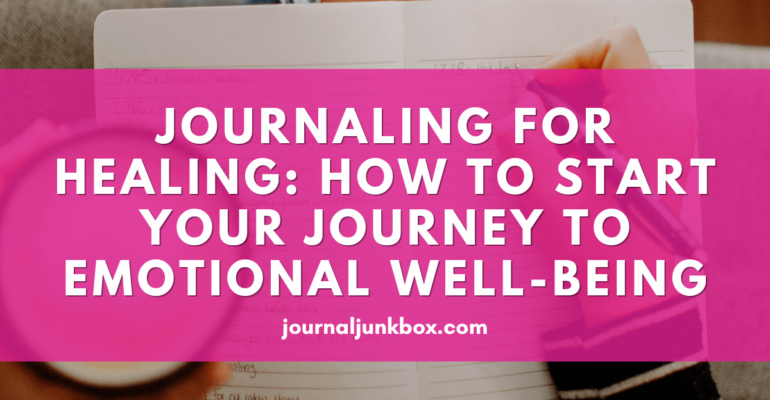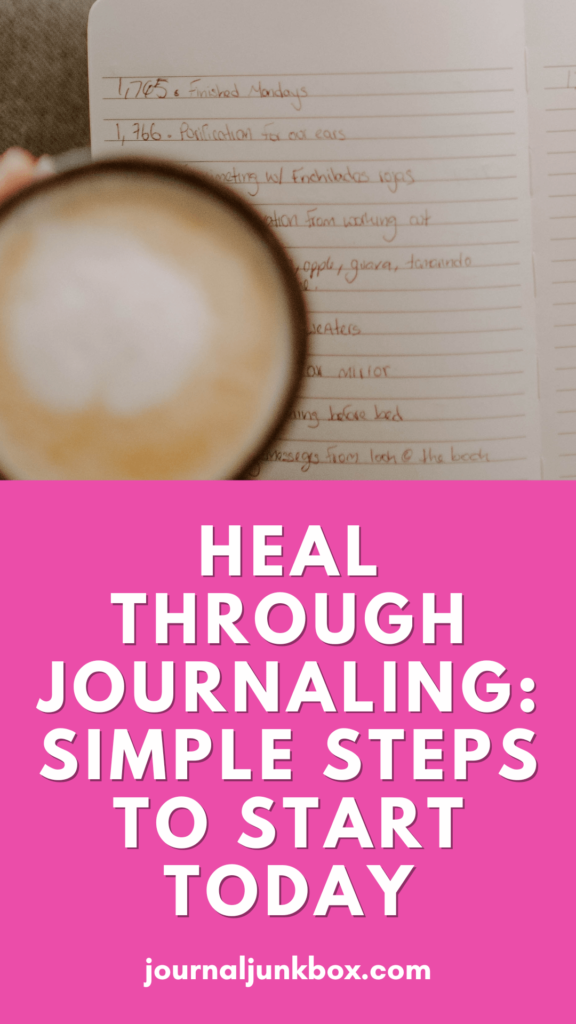Journaling for Healing: How to Start Your Journey to Emotional Well-being
January 25, 2025 2025-01-24 21:14Journaling for Healing: How to Start Your Journey to Emotional Well-being

Journaling for Healing: How to Start Your Journey to Emotional Well-being
In celebration of Breast Cancer Awareness month, we’d like to focus on journaling for healing. It is a simple yet powerful way to work through emotions, stress, and even past trauma. Writing down your thoughts allows you to reflect, process, and understand your feelings in a safe space. In this guide, we’ll walk you through how to start journaling for emotional healing, so you can use writing as a tool to improve your mental health and overall well-being.

Why Journaling for Healing Works
Journaling for healing is an effective method because it helps you express your emotions without judgment. Sometimes, we bottle up feelings or find it hard to talk about what’s bothering us. Writing gives you the freedom to let it all out, helping to release built-up tension and stress.
Many people use journaling for mental health because it allows them to reflect on their experiences and see patterns in their thoughts and behaviors. This insight can lead to breakthroughs in self-understanding and emotional healing. By getting into the habit of writing regularly, you can use journaling to heal old wounds, face challenges head-on, and practice self-care in a meaningful way.

Step 1: Start Small with Guided Prompts
If you’re new to journaling, it can feel overwhelming to know where to begin. A great place to start is with guided journaling for healing. These are prompts or questions designed to help you explore your emotions and experiences. For example:
- What is one thing you’re holding onto that you want to let go of?
- Write about a memory that has stuck with you—why do you think it’s so significant?
- How do you feel today, and why?
These reflective journaling exercises are simple but can open the door to deeper emotional healing. You don’t have to write for long periods. Even just five to ten minutes can make a big difference in your mental health.
Step 2: Make Journaling a Routine
Consistency is key when it comes to journaling for mental health. Healing takes time, and the more you journal, the more benefits you’ll see. Set aside a specific time each day to write, whether it’s in the morning, during a lunch break, or before bed. Over time, you’ll notice how helpful journaling can be for emotional healing and stress relief.
Don’t worry if some days you don’t feel like writing much. The act of sitting down and jotting down a few thoughts is enough to keep the habit alive. This is all part of building self-reflection into your routine.
Step 3: Explore Different Types of Journaling
There are many different ways to journal for healing, and not every method works for everyone. Some people prefer creative journaling, using doodles, sketches, or even magazine clippings to express themselves. Others may find writing detailed accounts of their day helpful. Try different approaches to see what feels best for you.
Therapeutic writing prompts, such as writing letters to your past self or imagining conversations with someone who has hurt you, can help you process trauma. Healing through creative journaling also gives you the chance to explore your thoughts in a non-linear, more relaxed way.

Step 4: Reflect on Your Progress
As you continue your journaling journey, take time to look back on what you’ve written. You may begin to notice certain patterns—maybe you’ve overcome certain fears or anxieties, or maybe some issues continue to show up. Journaling for self-reflection helps you keep track of your emotional growth and healing progress.
Healing trauma through writing isn’t about finding instant solutions but about making gradual progress. Every journal entry is a small step toward better understanding yourself and your emotions.
Step 5: Use Your Journal for Self-Care
Journaling is also a wonderful self-care practice. When you’re feeling overwhelmed, stressed, or anxious, writing can be a safe space to let those emotions out. Use your journal not only as a way to reflect but also as a tool to practice self-compassion. Write yourself kind notes, remind yourself of your strengths, and celebrate your small victories. If you’re wondering how to journal for self-care, here are a few ideas:
- Make a list of things you’re grateful for.
- Write about your proudest moments.
- Reflect on what you’ve learned from recent challenges.
Begin Your Healing Journey Today
Journaling for healing is a gentle, yet impactful, way to improve your emotional well-being. It gives you the space to process emotions, reflect on your experiences, and practice self-care. Whether you’re dealing with trauma or stress, or simply want to check in with yourself more regularly, journaling can be a powerful tool for mental health.
Start small, stay consistent, and explore different styles of journaling until you find what works for you. Your healing journey is personal, but every word you write brings you one step closer to emotional balance and well-being.
Don’t forget to share this post and pin the image below so we can keep growing our community!


